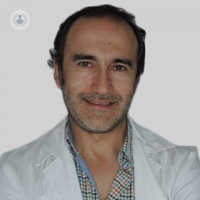Aortic aneurysm: how to detect and treat
Written by:aortic aneurysm is a sustained dilatation in time and localized to a specific area of the aorta artery. The dilatation of the aortic diameter should be at least 50% higher than expected by gender or size of the patient or observed immediately bordering areas (above or below ). The aorta is the main artery carrying blood via the human body. Leave it branches to the principal organs, its flow and pressure is very high so its rupture is a catastrophic situation for the sufferer.
The dilatation of the“Great pipe” Body involves weakening of its wall and thus the possibility of breakage. A statistical agree that the risk of rupture becomes important from 6 cms in thoracic aortic aneurysms and from 5.5 cm beyond the abdominal aorta.
Appear more frequently in men, from 50 years and the usual cardiovascular risk factors almost always present. Snuff, hypertension, hypercholesterolemia
Detection and diagnosis of aortic aneurysm
Never forget the physical examination including abdominal palpation in patients belonging to the population risk but ultrasonography is the test that provides the best performance when detecting and measuring. If the aneurysm has a size that exceeds the limits, the patient must undergo a periodic monitoring evalue its evolution and the possible need for intervention to prevent breakage.
In case you detect a size that meets treatment criteria and should be evaluated by Computerized Axial Tomography ( CAT) to establish accurately their actions and those of the bordering healthy sectors in order to establish the best treatment strategy.
How to treat aortic aneurysms
If caught early and with the wall intact, there are two main possibilities:
1.- Conventional Surgery in the sector affected by a prosthesis of synthetic material to healthy suturing the proximal and distal areas with normal caliber is exchanged. Requires an open, aggressive but very good long-term results surgery.
2.- Endovascular Surgery: generally accessed through the femoral artery a device that displays a is inserted into the aorta stent ( a metallic prostheses coated spring ) that support in the proximal and distal to the dilatation healthy regions preventing the flow breaks the weakened wall. It is a much less invasive procedure, but indicated in patients at high risk or elderly, but its durability is not yet sufficiently proven.
If the aneurysm is broken and extremely serious clinical situation occurs both options remain open surgery but is probably more suitable, but depend on multiple clinical circumstances.



